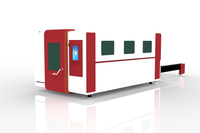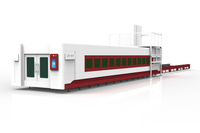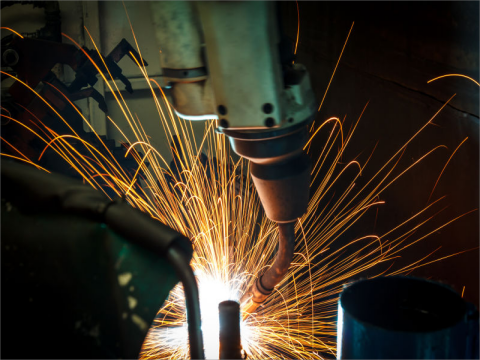
In the laser welding head industry, there are many manufacturers who use laser welding heads for stainless steel workpieces. Naturally, laser welding heads are also ideal for 304 stainless steel.
304 stainless steel is austenitic stainless steel. It is a stainless steel material with strong versatility, good corrosion resistance, heat resistance and non-magnetic. Corrosion resistance is superior to 200 series stainless steel. It also has good heat resistance, good weldability, low sensitivity to cold and hot cracking, good heat processing techniques such as stamping and bending, and no hot spots up to 1000-1200 degrees.

In recent years, stainless steel has been used in a wider and wider range of applications and is increasingly used in aerospace, electronic equipment, medical equipment, nuclear industry, mechanical instrumentation and other fields. Therefore, the packaging and welding of ultra-thin stainless steel products have become very important. Conventional welding methods are difficult to ensure the quality of weld formation of thin plates, while laser welding has unparalleled advantages over conventional welding, including the effective reduction of welding defects. Against this background, the welding process for 304 stainless steel was investigated. When using stainless steel, most parts must be welded, because the quality of welding will directly affect the performance of stainless steel parts. Stainless steel welded joints include weld metal region, heat affected region and base metal region.

First, what are the advantages of laser welding head welding stainless steel?
Compared with the traditional welding method pairs, low-power pulsed laser joint welding has the advantages of high power density, energy concentration, low energy input, narrow weld seam, small deformation. In addition, the laser beam can be irradiated to obtain a small spot focus, which can accurately position the laser beam. These characteristics make laser seam welding more suitable for welding small workpieces than other welding methods.
Welding, because the material is so thin, makes it easy to vaporize and perforate to get a continuous weld without burn-through. The key is the precise control of the parameters. Laser welding is characterized by good directionality and high power density of the laser beam. The laser beam is concentrated in a narrow area by means of an optical system and creates an area of heat source with high energy concentration at the welding position in a short time, which melts the welded object and creates a strong weld joint and weld seam. Laser welding is a process that involves the use of a laser to weld an object in a narrow area. There are two common laser welding methods: pulsed laser welding and continuous laser welding. The former is mainly used for welding single-point fixed continuous and thin materials. The latter is used for welding and cutting thicker parts.
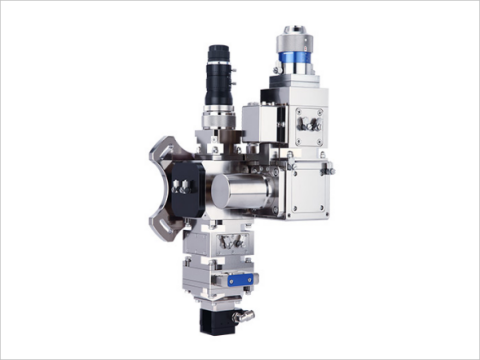
Second, what are the characteristics of stainless steel laser welding?
1. Non-contact processing does not require pressure and surface treatment of the workpiece.
2. Small welding joints, high energy density, suitable for high-speed processing.
3. Short-term welding is not only no thermal impact on the outside world, but also the thermal deformation of the material itself and the heat-affected area is small, especially suitable for processing high melting point, high hardness and special materials.
4. Does not require filler metal, does not require a vacuum environment (can be carried out directly in the air), and there is no danger of X-rays in the air as in the case of electron beams.
5. No wear and tear consumption of electrodes, tools, etc. compared to contact welding process.
6. No processing noise, no pollution to the environment.
7. Small workpieces can also be processed. In addition, welding can be performed through the wall of transparent materials.
8. Fiber optics can achieve long distance, hard to reach parts and multi-channel simultaneous or time-sharing welding.
9. It is easy to change the laser output focal length and welding point position.
10. Easy handling of robots and robotic equipment.
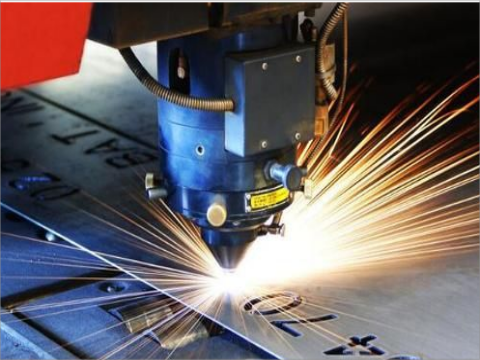
Third, the main reasons affecting the quality of laser welding is the welding current, pulse width, pulse frequency and so on. The main effects are as follows:
1. With the increase of current, the weld width increases, spattering gradually occurs in the welding process, oxidation occurs on the surface of the weld, and the weld has a rough feeling.
2. As the pulse width increases, the weld width also increases. The change of pulse width has an important effect on the welding effect of stainless steel ultra-thin plate laser welding machine. A slight increase in pulse width may cause oxidation and burn-through of the sample.
3. As the pulse frequency increases, the overlap of the weld joints increases, and the width of the weld joints first increases and then remains essentially constant. Under a microscope, the weld becomes smoother and more aesthetically pleasing. However, when the pulse frequency increases to a certain value, spattering is severe during the welding process, the weld becomes rough, and the upper and lower surfaces of the part being welded are oxidized.
4. Positive defocusing is suitable for laser welding of ultra-thin plates. At the same amount of defocus, the weld surface obtained by positive defocus laser welding is smoother and more aesthetically pleasing than the weld surface obtained by negative defocus.






















